Nowadays, we need to combine data from multiple sources to perform data analyses for different purposes. Data consistency and quality have become agonising problems. Data wrangling helps transform different types of data into a format that is easier to analyse. This article explains data wrangling, including its steps, benefits, use cases and tools used for automation.
Inhaltsverzeichnis
What is data wrangling?
Data wrangling is the Process in which data is converted into a high-quality format and structured. Data wrangling plays an important role in the Data analysis and at the Machine learning. The reason for this is that the accuracy and reliability of the results depend to a large extent on the Data quality depend on. Data wrangling is often also referred to as "data munging".
There are several tasks associated with data manipulation. Some examples are collecting data from different sources, data cleansing processes, removing data inconsistencies and converting to a desired data format. The ultimate goal of data cleansing is to improve data quality. It helps to achieve more accurate, more useful and better results.
What is the difference between data wrangling and data cleansing?
Data wrangling and Data Cleansing are similar, as both are crucial for data analysis. Nevertheless, both processes have different main focuses. Data cleansing has a narrower focus than data wrangling, as it is primarily concerned with removing duplicate, inaccurate, incomplete and irrelevant data from the raw data sets. It also includes the standardisation and validation of data. The The main aim of data cleansing is to improve the quality, reliability and consistency of data.
In contrast, data wrangling goes beyond data cleansing. Data wrangling covers a wide range of tasks for converting and structuring data into a useful and reliable format. It can therefore be said that data cleansing is a subtask of data wrangling.
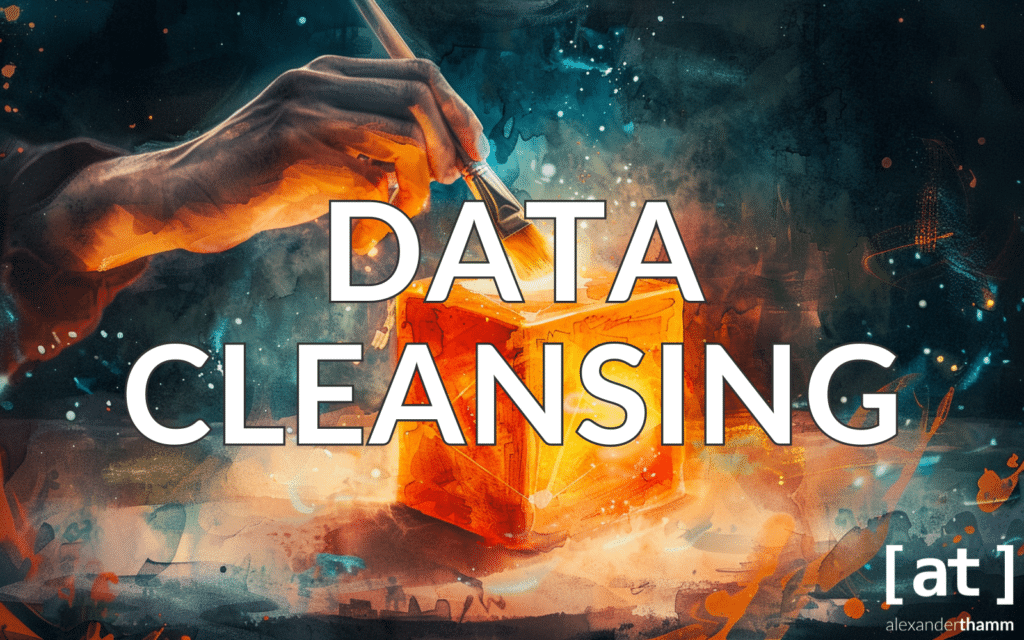
Data cleansing is crucial for improved data quality and data consistency. Find out how to overcome challenges and utilise the benefits in your company in our blog post:
What is the difference between data wrangling and data mining?
Data mining is a comprehensive process that transforms large data sets into valuable information. It helps to Data uncover hidden correlations, patterns, trends and anomalies. One of the most important steps in data mining is data wrangling, which can also include data processing. For this reason, the Data wrangling is often a preliminary stage of data analysis and data mining.
In addition, the main focus of data wrangling is on improving data quality by correcting errors and inconsistencies. Data mining, on the other hand, is about extracting useful information and insights from the data.
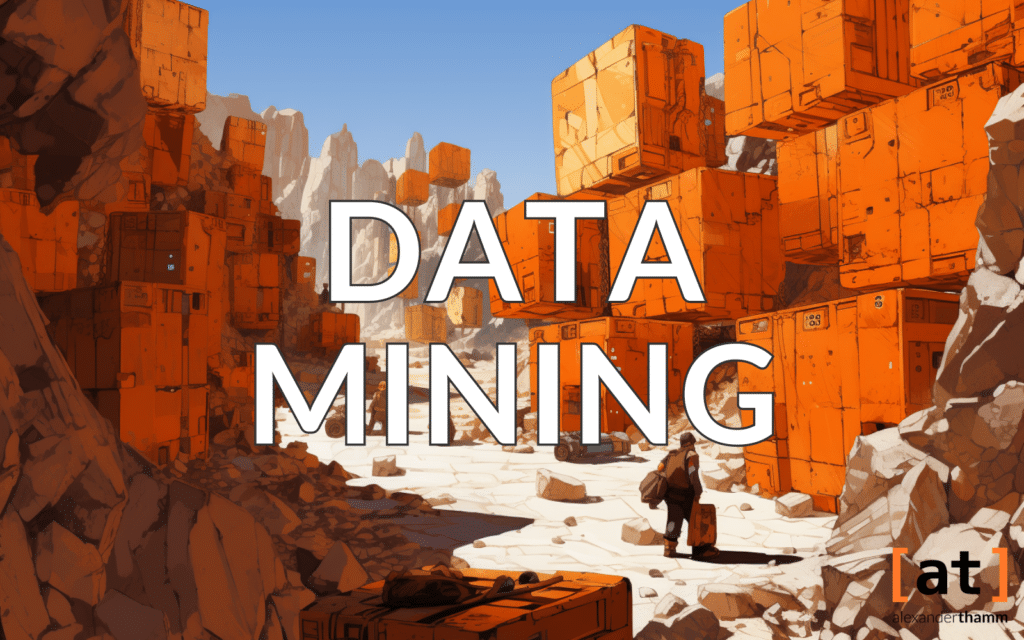
Find out how data mining helps companies to gain hidden insights from large amounts of data using analytical techniques and tools.
Advantages of data wrangling
Data wrangling offers several benefits, including improved data consistency and quality, enabling organisations to make more informed decisions. The five key benefits of data wrangling are explained below.
- Improved data consistencyData analysis and machine learning require the combination of data from different sources, often in different formats. Data wrangling helps to achieve a standardised data format and thus improve the consistency of the data.
- Lower costsWell-structured data makes the analysis process more efficient as it does not require a lot of computing power. In addition, data storage costs are lower as redundant data is reduced. Data wrangling therefore offers considerable cost savings for companies.
- Better insightsData wrangling improves data quality. This makes data analysis and machine learning inputs more reliable and the results more accurate. This leads to better insights for making informed business decisions.
- Facilitating data integrationMost data wrangling applications need to combine data from different sources that cannot be easily combined in their raw format. Data wrangling removes this obstacle by converting and structuring the data into a standardised format, making it easier to combine.
- Improved data qualityData wrangling eliminates problems in the data, such as duplicates, missing data and inconsistencies, resulting in improved quality. Many costly errors can be avoided by using high quality data. It also makes the results more reliable.
Examples of data wrangling
There are many use cases for data wrangling. The five most common use cases for data wrangling are listed below.
Gain insights into the world of finance
Financial institutions generate a large amount of information, such as financial transaction records and stock market reports, often in unstructured formats. Data wrangling converts this data into structured and usable formats so that companies can gain important, actionable financial insights. These insights help companies make informed decisions about market opportunities and understand market dynamics.
Efficient reporting
Many companies, especially in the financial sector, have to regularly produce performance and sales reports to make their activities transparent for the company and customers. The data for such reports often comes from unstructured sources such as Excel spreadsheets, databases and text files. They contain data problems that make it difficult to create reports directly. Data wrangling transforms this data into coherent and structured formats that make it easier to analyse, visualise and create reports. Senior management can quickly capture key insights, trends and patterns to make strategic decisions.
Improve the customer experience
Companies need to understand the needs of their customers in order to develop effective products for them. Various customer data such as buying habits, browsing behaviour, interactions, preferences and demographics are valuable sources that reveal hidden patterns. Data wrangling helps companies turn these insights into better marketing strategies and targeted advertising to improve the customer experience.
Research and teaching
Data wrangling helps researchers to carry out their experiments. This involves combining data from different sources and converting it into a standardised format that is required for comprehensive analysis. Data wrangling is also useful in the education sector. It helps in transforming student data such as performance, attendance and learning outcomes to develop better learning strategies and improve student performance.
Improving the healthcare system
Large amounts of medical data are generated every day, including clinical records, medical laboratory results and treatment plans. Data processing is essential for a standardised view of patient records. Healthcare facilities can analyse patient data and use it effectively for research and development. The result is improved patient care.

In our article, we show you why good data quality is the key to reliable processes and how you can ensure this for your company:
The six steps of data wrangling
Data wrangling usually consists of six steps: exploration, transformation, cleansing, enrichment, validation and storage. Let's take a look at what each step involves.
1. data exploration
The first step in data wrangling is to gain a good understanding of the data. The data sources and types used for the respective purpose are determined and imported into the processing environment. In this phase, the data quality and structure are analysed to identify missing and duplicate values, inconsistencies, errors and outliers.
This is an important phase before the other steps are tackled. The better you understand your data, the easier it is to find tools and methods for cleansing and structuring the required format.
2. data cleansing
The next step is to cleanse the data in order to eliminate the problems identified in the first phase. Unstructured data often contains inconsistencies and missing or redundant values. Data cleansing removes duplicate, inaccurate, incomplete and irrelevant data.
Data cleansing also includes data validation and standardisation to ensure that the data complies with certain rules and standards. Use data cleansing tools to identify and correct various problems in the raw data. This improves the accuracy, consistency and uniformity of the data.
3. data transformation
Cleaned data is often not available in the correct format. In the third phase, the cleansed data is converted into the correct format or structure for the analysis. It can include data aggregation, normalisation, layout changes and removal of complex data structures. For example, objects and arrays can be split into separate data points to facilitate analysis. The transformed data helps to perform various data analysis activities, including data visualisation, reporting and data modelling.
4. data enrichment
Even after the data has been converted into the desired format, it may not exactly fulfil the purpose. In this case, you can enrich the dataset by integrating data from external sources. For example, you can integrate demographic information from census data, geographical data and data from social media platforms into third-party sources. Data enrichment allows organisations to obtain a more complete data set and develop a deeper understanding of the business use case.
5. data validation
Data validation is another important step in the data wrangling process. It ensures that the converted data fulfils the desired quality, consistency and security standards. It is also important to maintain the integrity of the data so that reliable results can be generated for better decision-making.
For example, data accuracy can be checked by cross-referencing if the data is within a certain range, data formats and types are validated and it is checked whether the data is standardised.
6. data storage
The final part of data preparation is to preserve the data for access and processing by downstream processes such as machine learning and business intelligence. This data is a valuable asset in the organisation. It is therefore important to store the data securely and reliably to avoid data protection and security concerns.

Good data quality not only ensures the reliability of operational processes, but also protects against high financial risks due to data errors.
Data Wrangling Tools
Most data processing tasks can be carried out manually. However, it is easier to automate them when you have a large data set to process. Data wrangling tools allow companies to automate these tasks and speed up the process. Below are some of the most commonly used data wrangling tools on the market.
Microsoft Power Query
Power Query from Microsoft is a popular data processing tool that is also integrated into a widely used Microsoft Excel application. It offers an excellent graphical user interface for retrieving data and an extensive editor for data conversion and preparation tasks. It is not only included in Excel, but also in many other Microsoft applications. Thus, the power tool enables connection to multiple data sources. Overall, this tool enables companies to create ETL applications (extract, transform and load). Power Query has many functions that set it apart from other applications. For example, repeatable queries can be defined and connections to over a hundred data sources can be established.
Alteryx AI platform
This comprehensive AI platform offers AI-supported analysis and machine learning tools for companies. Its components, such as Designer Cloud, AutoML, ETL and ELT services, provide powerful data preparation tools for data processing. This platform offers visual and interactive tools for data wrangling, which are either no-code or low-code tools. As with many other tools, you can combine data from different sources, from spreadsheets to the Cloud. You can add geodata from Mapbox and TomTom as well as demographic data from Dun & Bradstreet, Experian and the US Census Data for data enrichment.
Altair Monarch
This is another popular tool that can be integrated with all data sources that are more difficult to transform and structure. Some examples are databases, PDF data and cloud-based data. This tool is a desktop-based application that can be used to structure the data into a more readable format. It allows users to perform data processing tasks and connect data from different sources without any code.
Talend
Talend is another data processing platform that utilises the power of machine learning for the processing process. This low-code platform offers data integration, transformation and mapping capabilities, including ETL and ELT tools. Talend enables the integration of data from virtually any data source and any data type. It also provides automatic quality checks to ensure that data meets expectations.
Data wrangling: the basis for effective data analysis
Data wrangling is essential for effective data analysis and machine learning. As you have learned in this article, it is a six-step process that transforms and structures data into a standardised format. There is a wide range of use cases for data wrangling that offer several benefits to organisations. Various data wrangling tools have been developed to automate the individual steps of the process.




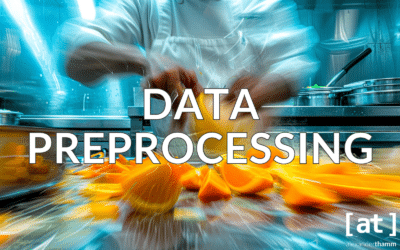
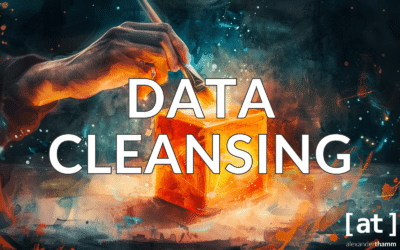


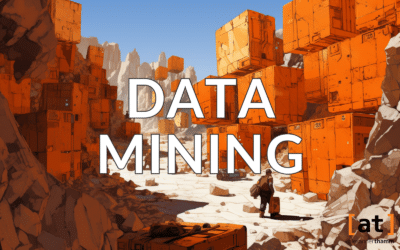


0 Kommentare